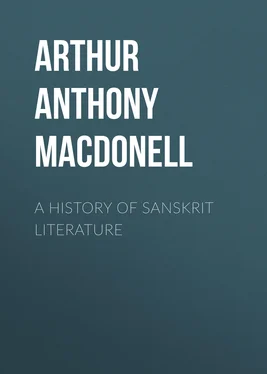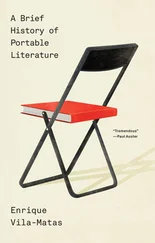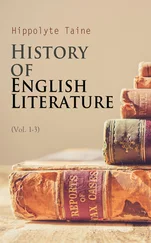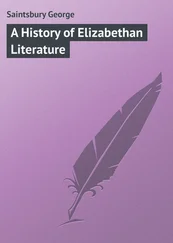Arthur Anthony MacDonell - A History of Sanskrit Literature
Здесь есть возможность читать онлайн «Arthur Anthony MacDonell - A History of Sanskrit Literature» — ознакомительный отрывок электронной книги совершенно бесплатно, а после прочтения отрывка купить полную версию. В некоторых случаях можно слушать аудио, скачать через торрент в формате fb2 и присутствует краткое содержание. Жанр: foreign_prose, foreign_antique, на английском языке. Описание произведения, (предисловие) а так же отзывы посетителей доступны на портале библиотеки ЛибКат.
- Название:A History of Sanskrit Literature
- Автор:
- Жанр:
- Год:неизвестен
- ISBN:нет данных
- Рейтинг книги:5 / 5. Голосов: 1
-
Избранное:Добавить в избранное
- Отзывы:
-
Ваша оценка:
- 100
- 1
- 2
- 3
- 4
- 5
A History of Sanskrit Literature: краткое содержание, описание и аннотация
Предлагаем к чтению аннотацию, описание, краткое содержание или предисловие (зависит от того, что написал сам автор книги «A History of Sanskrit Literature»). Если вы не нашли необходимую информацию о книге — напишите в комментариях, мы постараемся отыскать её.
A History of Sanskrit Literature — читать онлайн ознакомительный отрывок
Ниже представлен текст книги, разбитый по страницам. Система сохранения места последней прочитанной страницы, позволяет с удобством читать онлайн бесплатно книгу «A History of Sanskrit Literature», без необходимости каждый раз заново искать на чём Вы остановились. Поставьте закладку, и сможете в любой момент перейти на страницу, на которой закончили чтение.
Интервал:
Закладка:
In the inscriptions of the third century B.C. two types, the Northern and the Southern, may be distinguished in the Brāhmī writing. From the former is descended the group of Northern scripts which gradually prevailed in all the Aryan dialects of India. The most important of them is the Nāgarī (also called Devanāgarī ), in which Sanskrit MSS. are usually written, and Sanskrit as well as Marāṭhī and Hindī books are regularly printed. It is recognisable by the characteristic horizontal line at the top of the letters. The oldest inscription engraved entirely in Nāgarī belongs to the eighth, and the oldest MS. written in it to the eleventh century. From the Southern variety of the Brāhmī writing are descended five types of script, all in use south of the Vindhya range. Among them are the characters employed in the Canarese and the Telugu country.
Owing to the perishability of the material on which they are written, Sanskrit MSS. older than the fourteenth century A.D. are rare. The two ancient materials used in India were strips of birch bark and palm leaves. The employment of the former, beginning in the North-West of India, where extensive birch forests clothe the slopes of the Himālaya, gradually spread to Central, Eastern, and Western India. The oldest known Sanskrit MS. written on birch bark dates from the fifth century A.D., and a Pāli MS. in Kharoshṭhī which became known in 1897, is still older, but the use of this material doubtless goes back to far earlier days. Thus we have the statement of Quintus Curtius that the Indians employed it for writing on at the time of Alexander. The testimony of classical Sanskrit authors, as well as of Albērūnī, shows that leaves of birch bark ( bhūrja-pattra ) were also regularly used for letter-writing in early mediæval India.
The first example of a palm leaf Sanskrit MS. belongs to the sixth century A.D. It is preserved in Japan, but there is a facsimile of it in the Bodleian Library. According to the Chinese pilgrim Hiouen Thsang, the use of the palm leaf was common all over India in the seventh century; but that it was known many centuries earlier is proved by the fact that an inscribed copper-plate, dating from the first century A.D. at the latest, imitates a palm leaf in shape.
Paper was introduced by the Muhammadan conquest, and has been very extensively used since that time for the writing of MSS. The oldest known example of a paper Sanskrit MS. written in India is one from Gujarat, belonging to the early part of the thirteenth century. In Northern India, where ink was employed for writing, palm leaves went out of use after the introduction of paper. But in the South, where a stilus has always been employed for scratching in the character, palm leaves are still common for writing both MSS. and letters. The birch bark and palm leaf MSS. are held together by a cord drawn through a single hole in the middle, or through two placed some distance apart. This explains how the Sanskrit word for “knot,” grantha , came to acquire the sense of “book.”
Leather or parchment has never been utilised in India for MSS., owing to the ritual impurity of animal materials. For inscriptions copper-plates were early and frequently employed. They regularly imitate the shape of either palm leaves or strips of birch bark.
The actual use of ink (the oldest Indian name of which is mashi ) is proved for the second century B.C. by an inscription from a Buddhist relic mound, and is rendered very probable for the fourth century B.C. by the statements of Nearchos and Quintus Curtius.
All the old palm leaf, birch bark, and paper Sanskrit MSS. have been written with ink and a reed pen, usually called kalama (a term borrowed from the Greek kalamos ). In Southern India, on the other hand, it has always been the practice to scratch the writing on palm leaves with a stilus, the characters being subsequently blackened by soot or charcoal being rubbed into them.
Sanskrit MSS. of every kind are usually kept between thin strips of wood with cords wound round them, and wrapped up in coloured, sometimes embroidered, cloths. They have been, and still are, preserved in the libraries of temples, monasteries, colleges, the courts of princes, as well as private houses. A famous library was owned by King Bhoja of Dhār in the eleventh century. That considerable private libraries existed in fairly early times is shown by the fact that the Sanskrit author Bāna (about 620 A.D.) had in his employment a reader of manuscripts. Even at the present day there are many excellent libraries of Sanskrit MSS. in the possession of Brahmans all over India.
The ancient Indian language, like the literature composed in it, falls into the two main divisions of Vedic and Sanskrit. The former differs from the latter on the whole about as much as Homeric from classical Greek, or the Latin of the Salic hymns from that of Varro. Within the Vedic language, in which the sacred literature of India is written, several stages can be distinguished. In its transitions from one to the other it gradually grows more modern till it is ultimately merged in Sanskrit. Even in its earliest phase Vedic cannot be regarded as a popular tongue, but is rather an artificially archaic dialect, handed down from one generation to the other within the class of priestly singers. Of this the language itself supplies several indications. One of them is the employment side by side of forms belonging to different linguistic periods, a practice in which, however, the Vedic does not go so far as the Homeric dialect. The spoken language of the Vedic priests probably differed from this dialect of the hymns only in the absence of poetical constructions and archaisms. There was, in fact, even in the earlier Vedic age, a caste language, such as is to be found more or less wherever a literature has grown up; but in India it has been more strongly marked than in any other country.
If, however, Vedic was no longer a natural tongue, but was already the scholastic dialect of a class, how much truer is this of the language of the later literature! Sanskrit differs from Vedic, but not in conformity with the natural development which appears in living languages. The phonetic condition of Sanskrit remains almost exactly the same as that of the earliest Vedic. In the matter of grammatical forms, too, the language shows itself to be almost stationary; for hardly any new formations or inflexions have made their appearance. Yet even from a grammatical point of view the later language has become very different from the earlier. This change was therefore brought about, not by new creations, but by successive losses. The most notable of these were the disappearance of the subjunctive mood and the reduction of a dozen infinitives to a single one. In declension the change consisted chiefly in the dropping of a number of synonymous by-forms. It is probable that the spoken Vedic, more modern and less complex than that of the hymns, to some extent affected the later literary language in the direction of simplification. But the changes in the language were mainly due to the regulating efforts of the grammarians, which were more powerful in India than anywhere else, owing to the early and exceptional development of grammatical studies in that country. Their influence alone can explain the elaborate nature of the phonetic combinations (called Sandhi ) between the finals and initials of words in the Sanskrit sentence.
It is, however, the vocabulary of the language that has undergone the greatest modifications, as is indeed the case in all literary dialects; for it is beyond the power of grammarians to control change in this direction. Thus we find that the vocabulary has been greatly extended by derivation and composition according to recognised types. At the same time there are numerous words which, though old, seem to be new only because they happen by accident not to occur in the Vedic literature. Many really new words have, however, come in through continual borrowings from a lower stratum of language, while already existing words have undergone great changes of meaning.
Читать дальшеИнтервал:
Закладка:
Похожие книги на «A History of Sanskrit Literature»
Представляем Вашему вниманию похожие книги на «A History of Sanskrit Literature» списком для выбора. Мы отобрали схожую по названию и смыслу литературу в надежде предоставить читателям больше вариантов отыскать новые, интересные, ещё непрочитанные произведения.
Обсуждение, отзывы о книге «A History of Sanskrit Literature» и просто собственные мнения читателей. Оставьте ваши комментарии, напишите, что Вы думаете о произведении, его смысле или главных героях. Укажите что конкретно понравилось, а что нет, и почему Вы так считаете.












